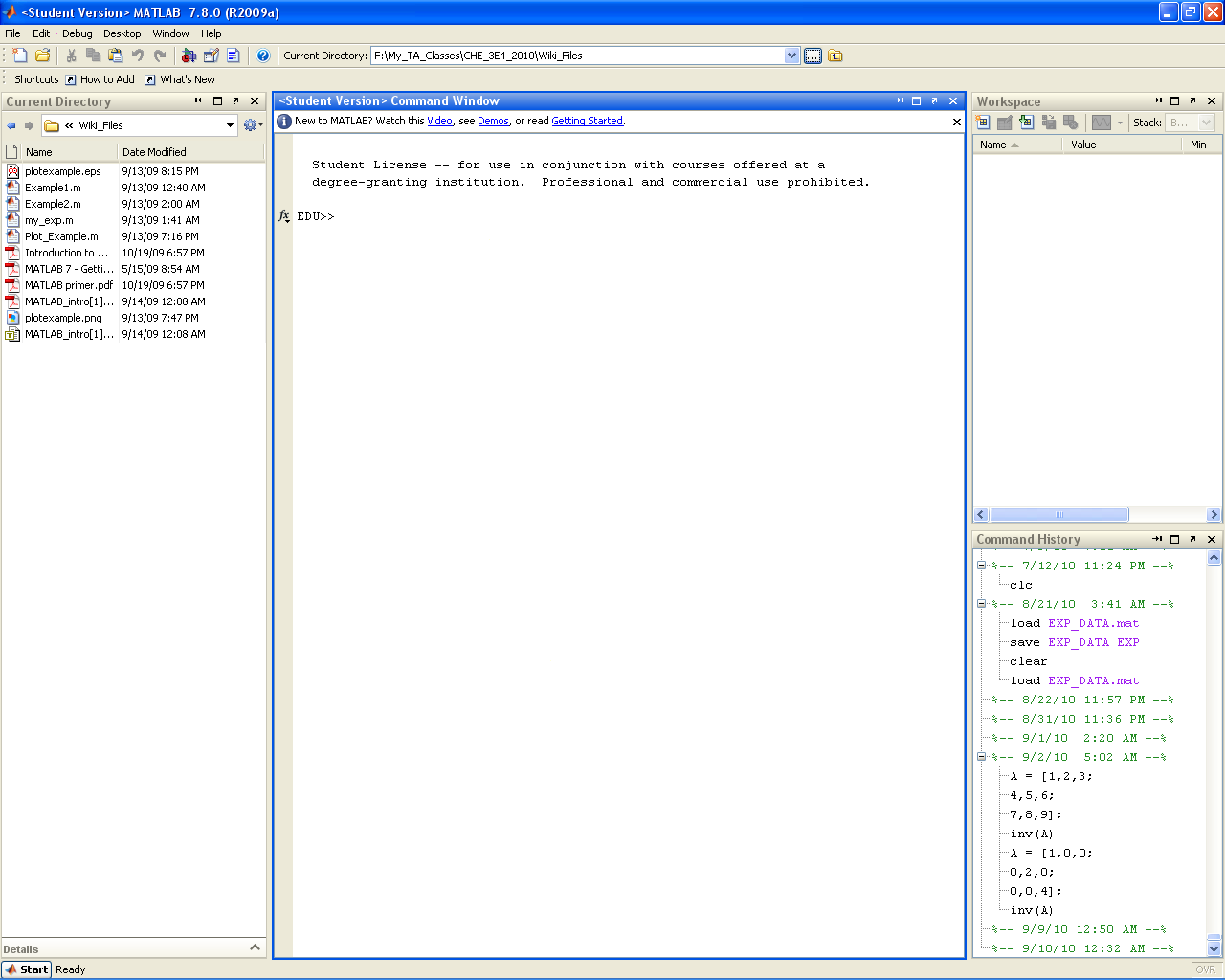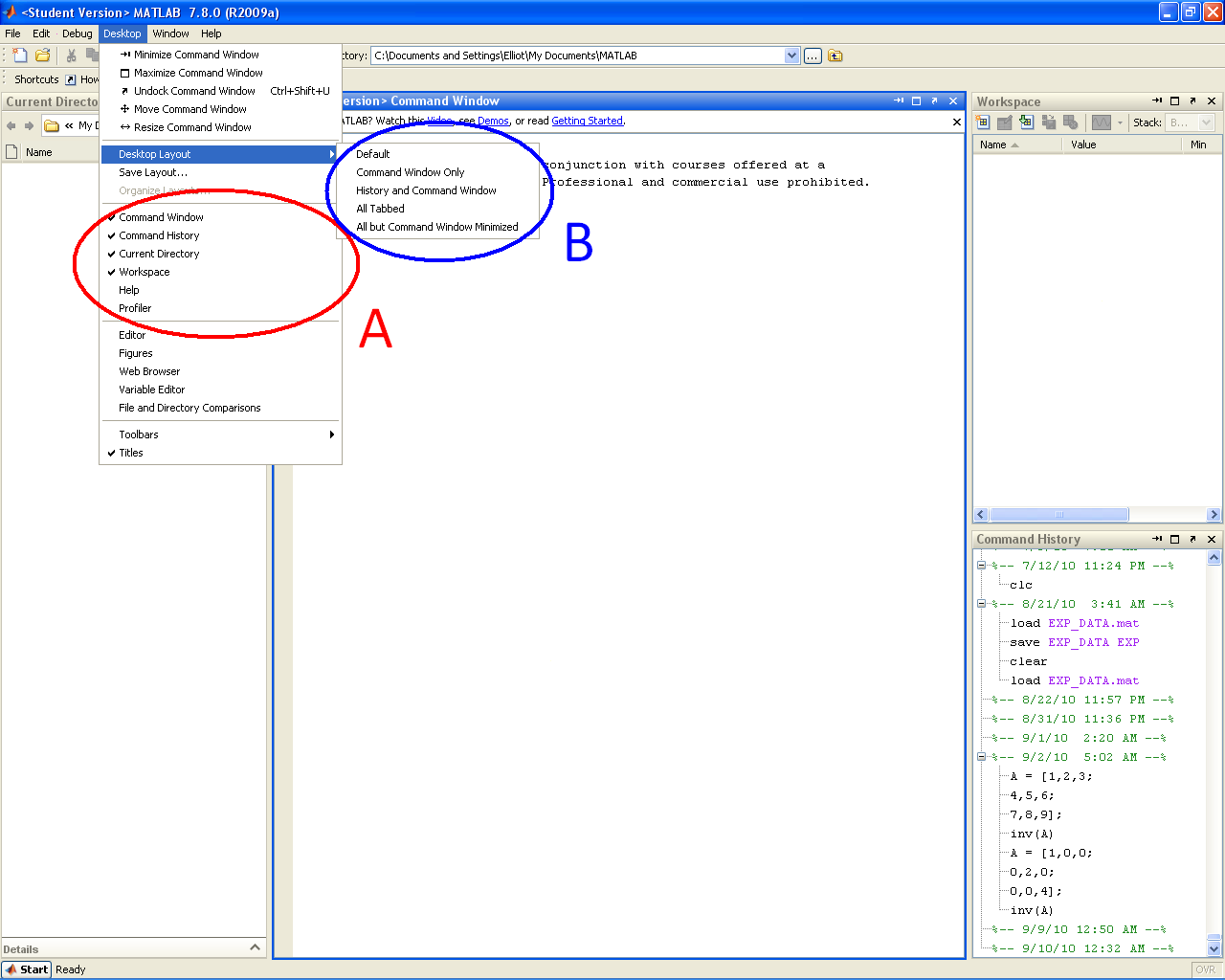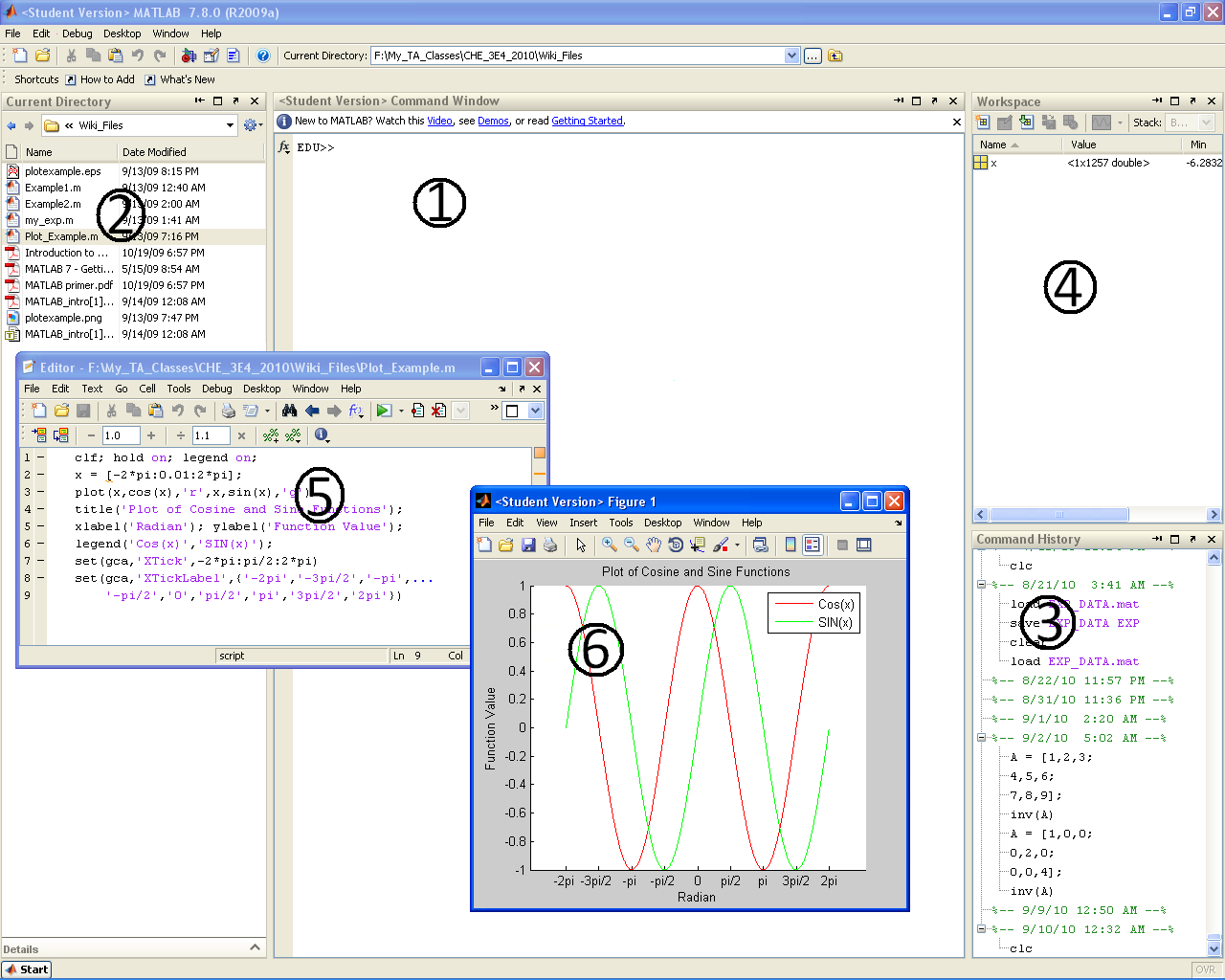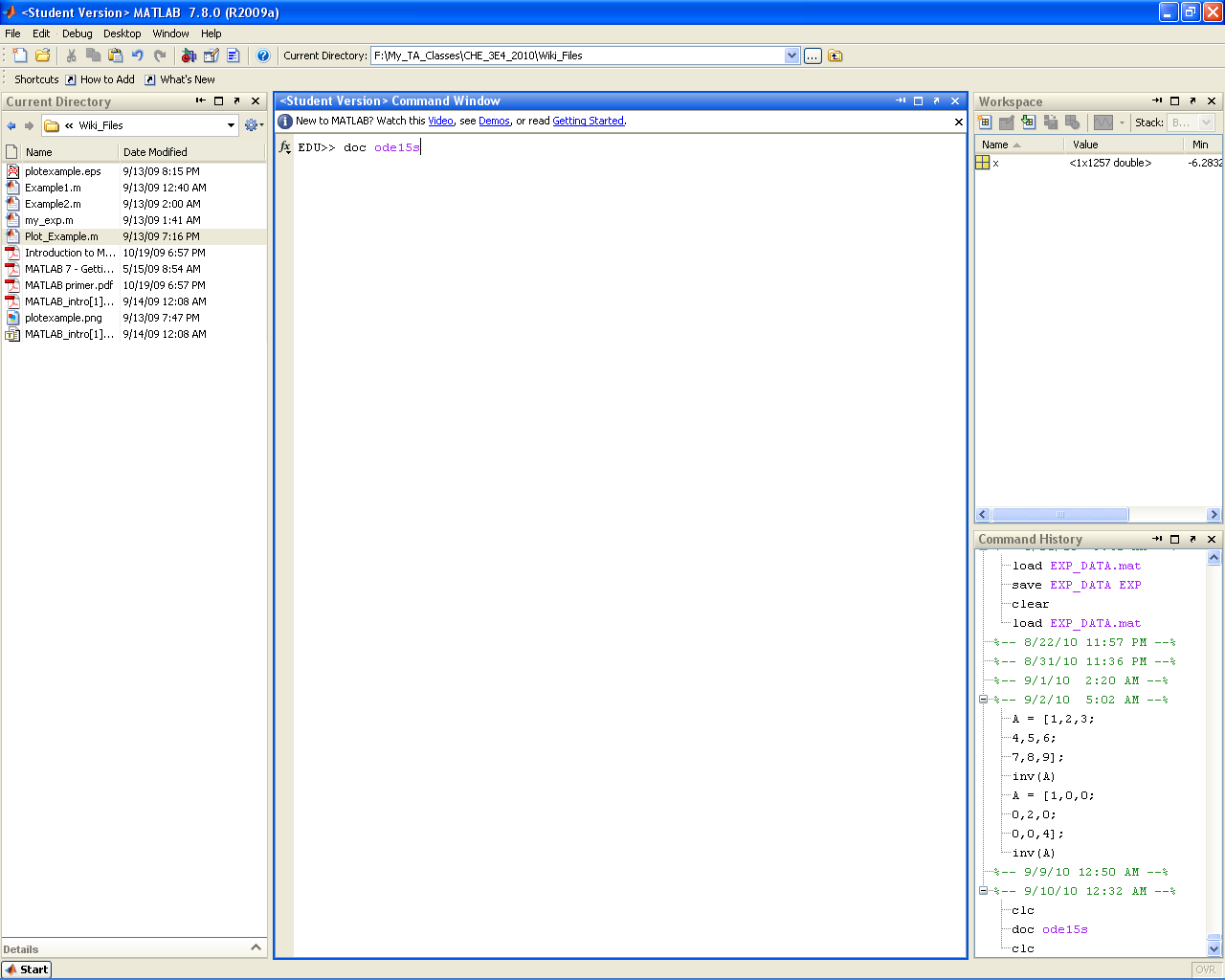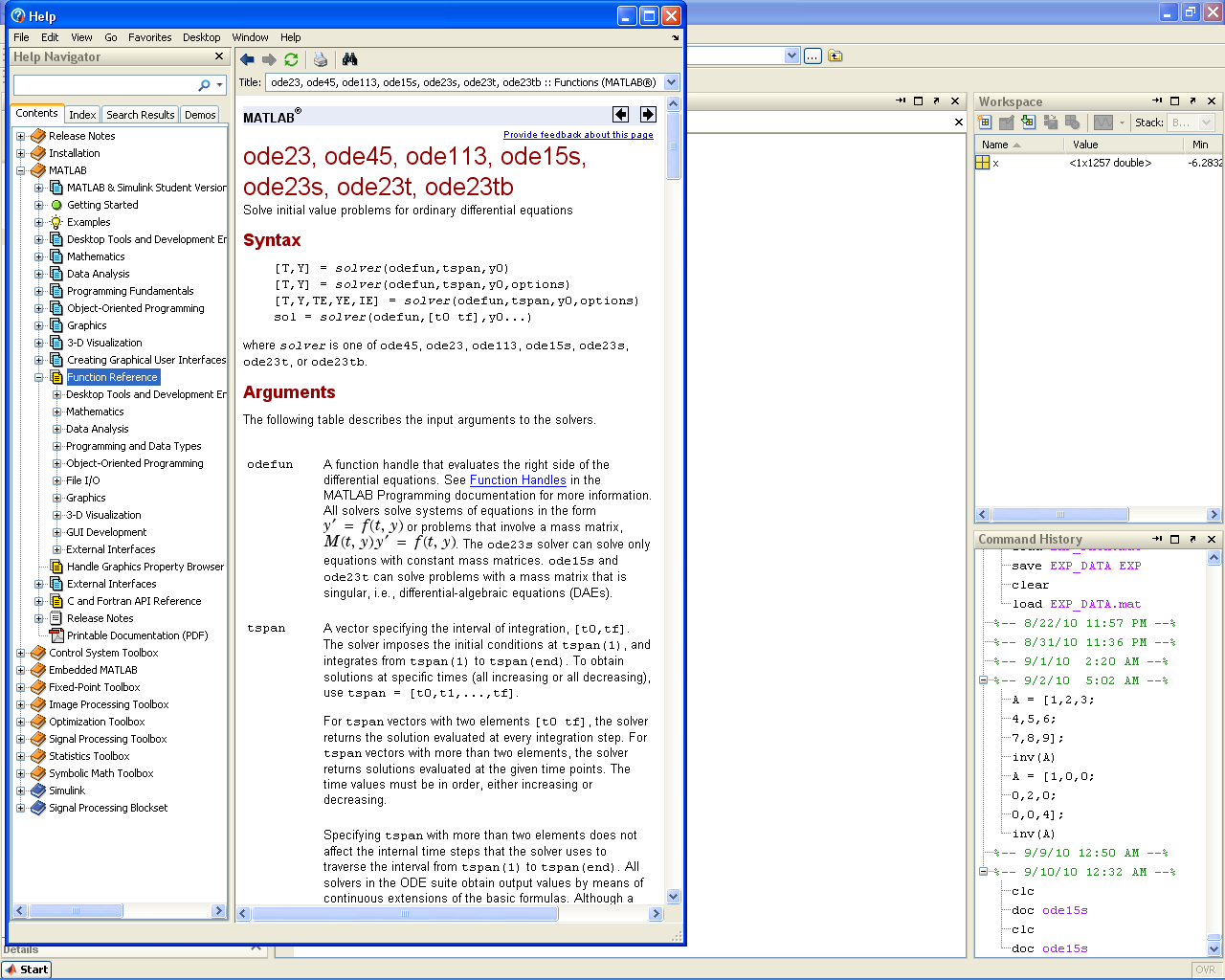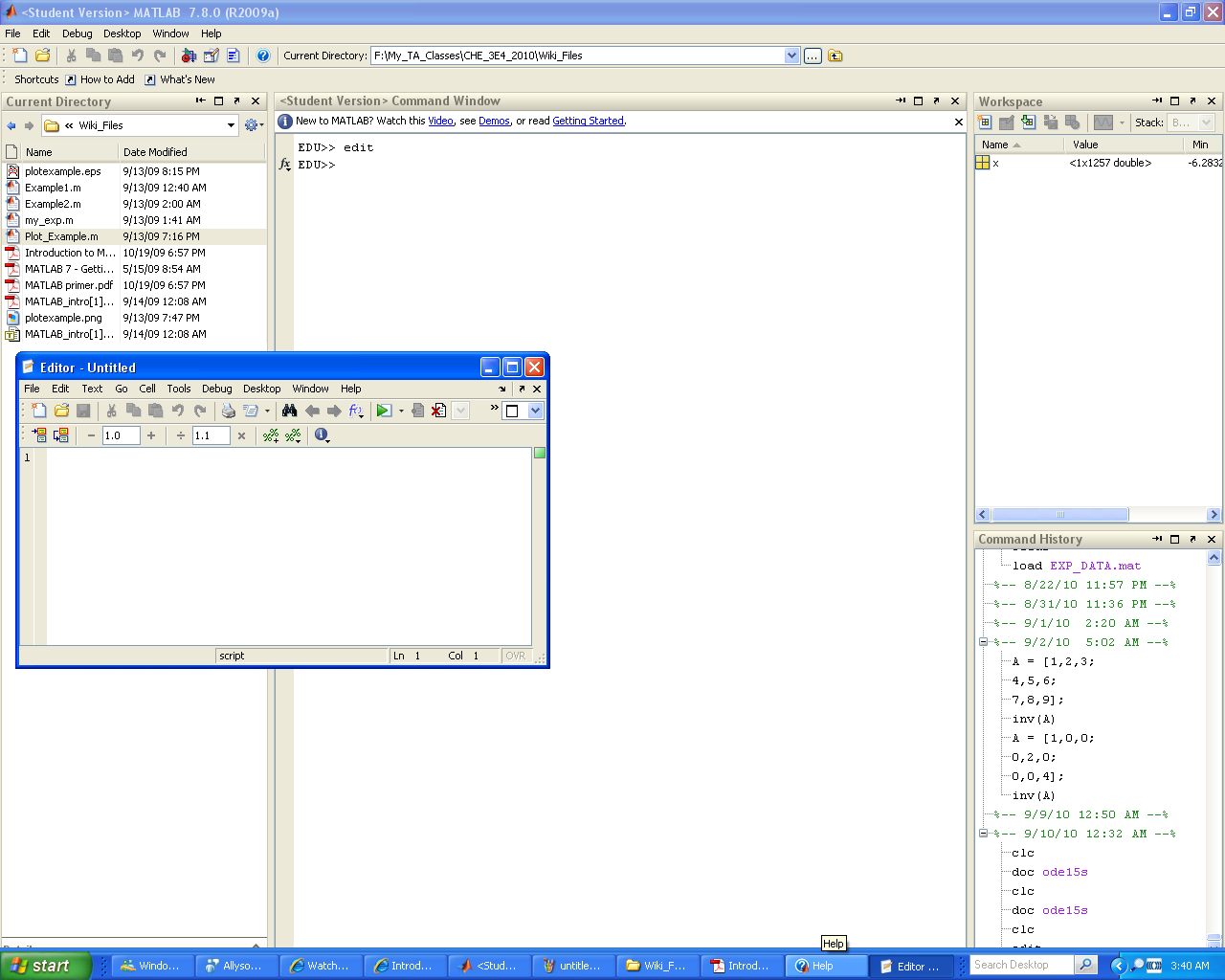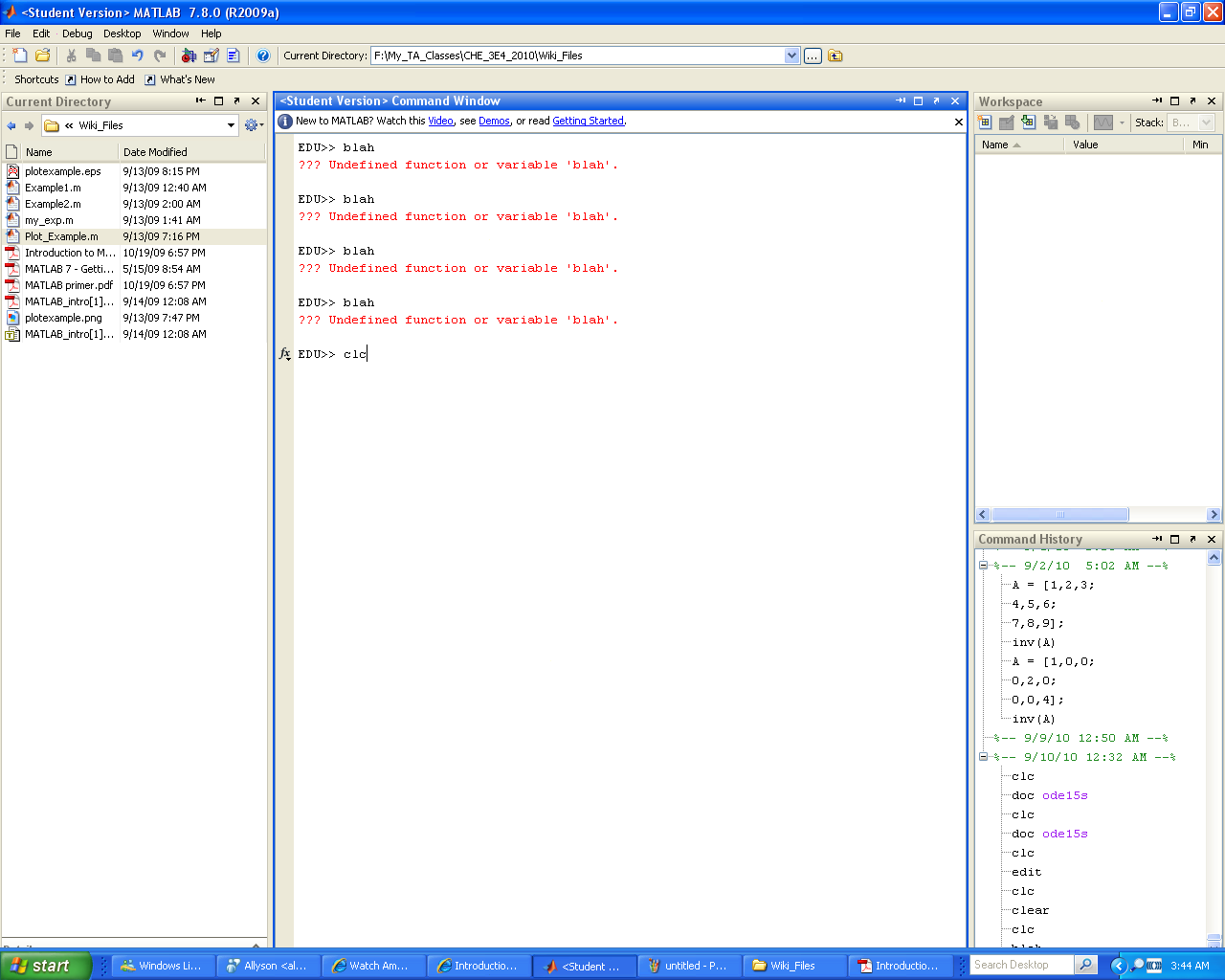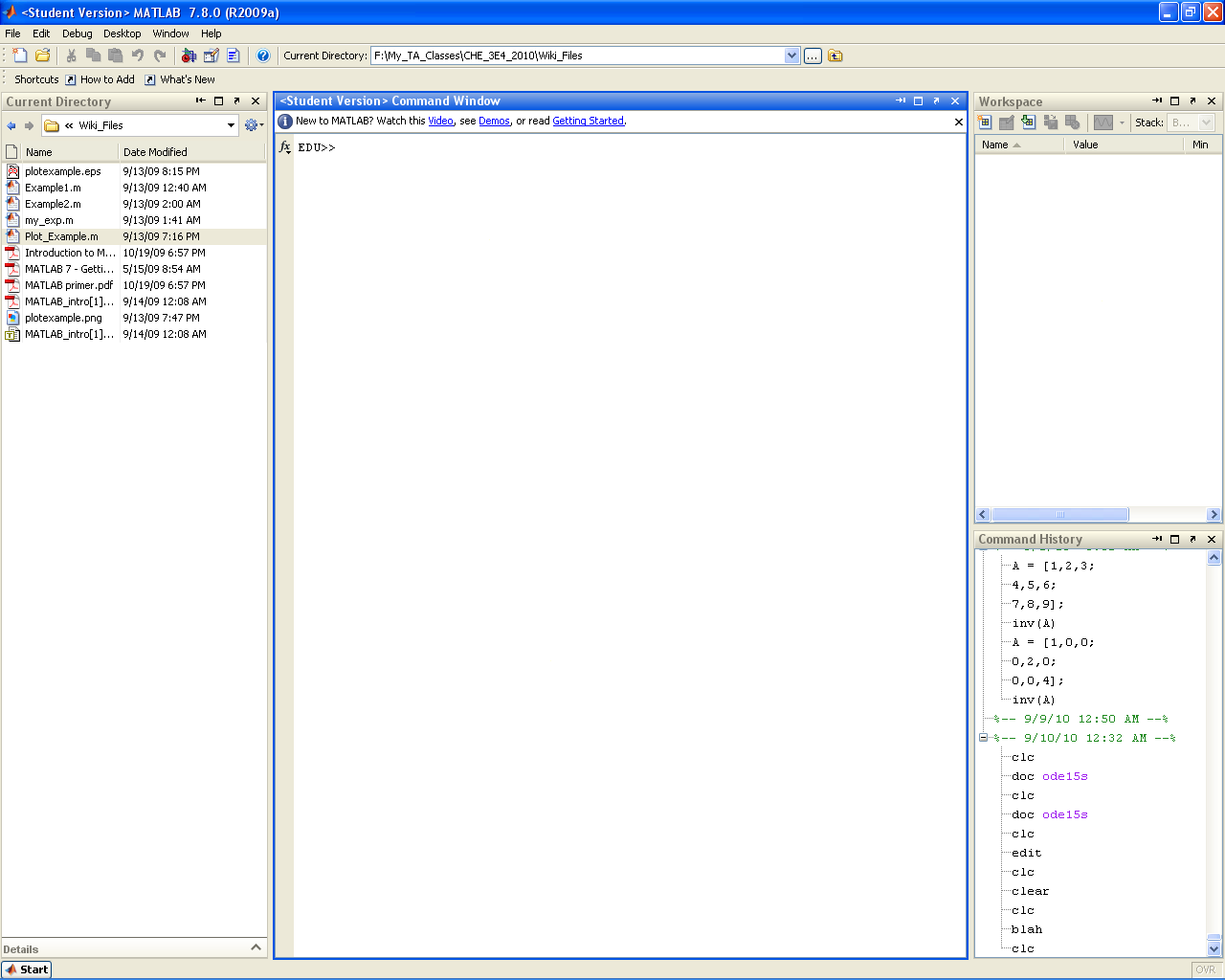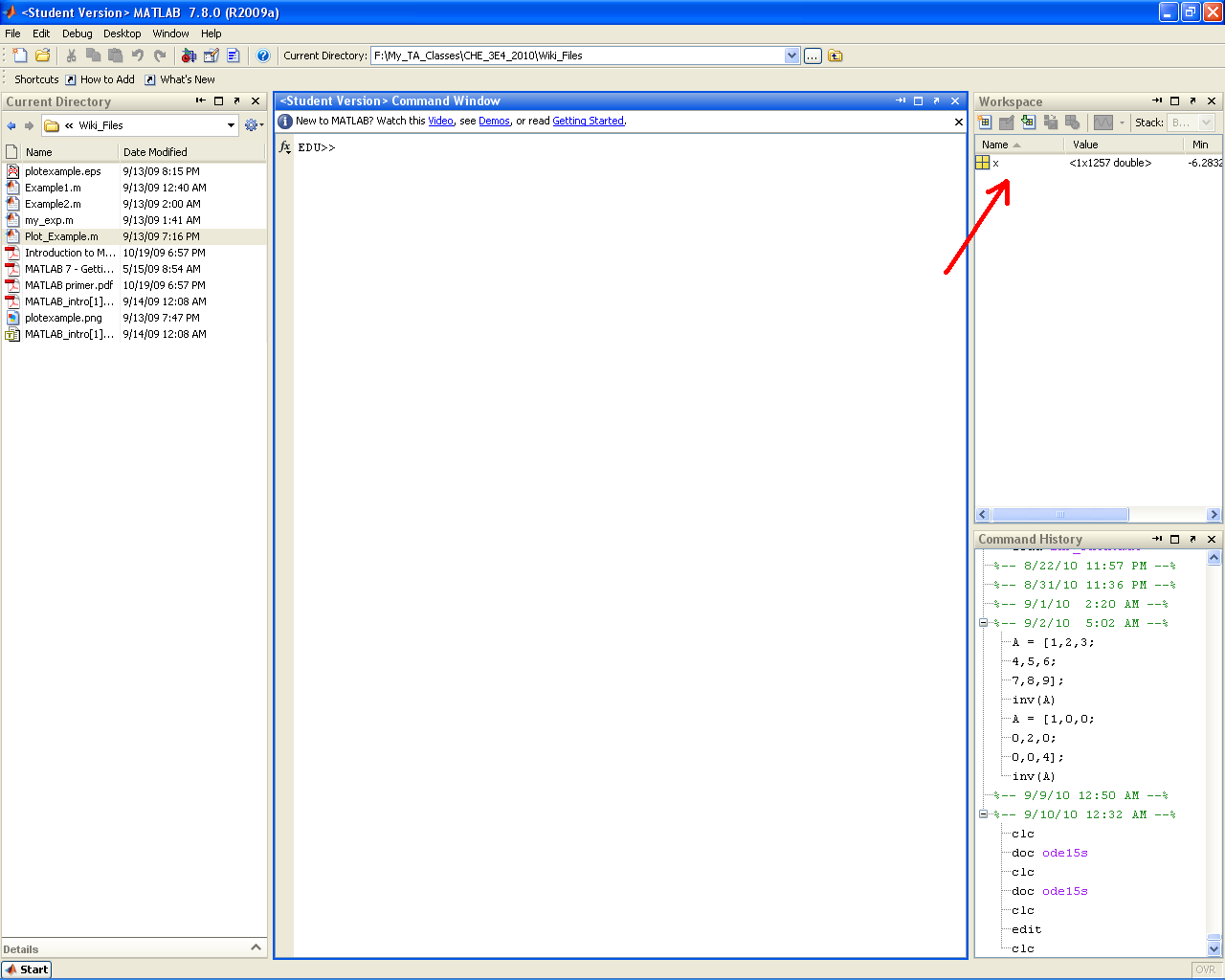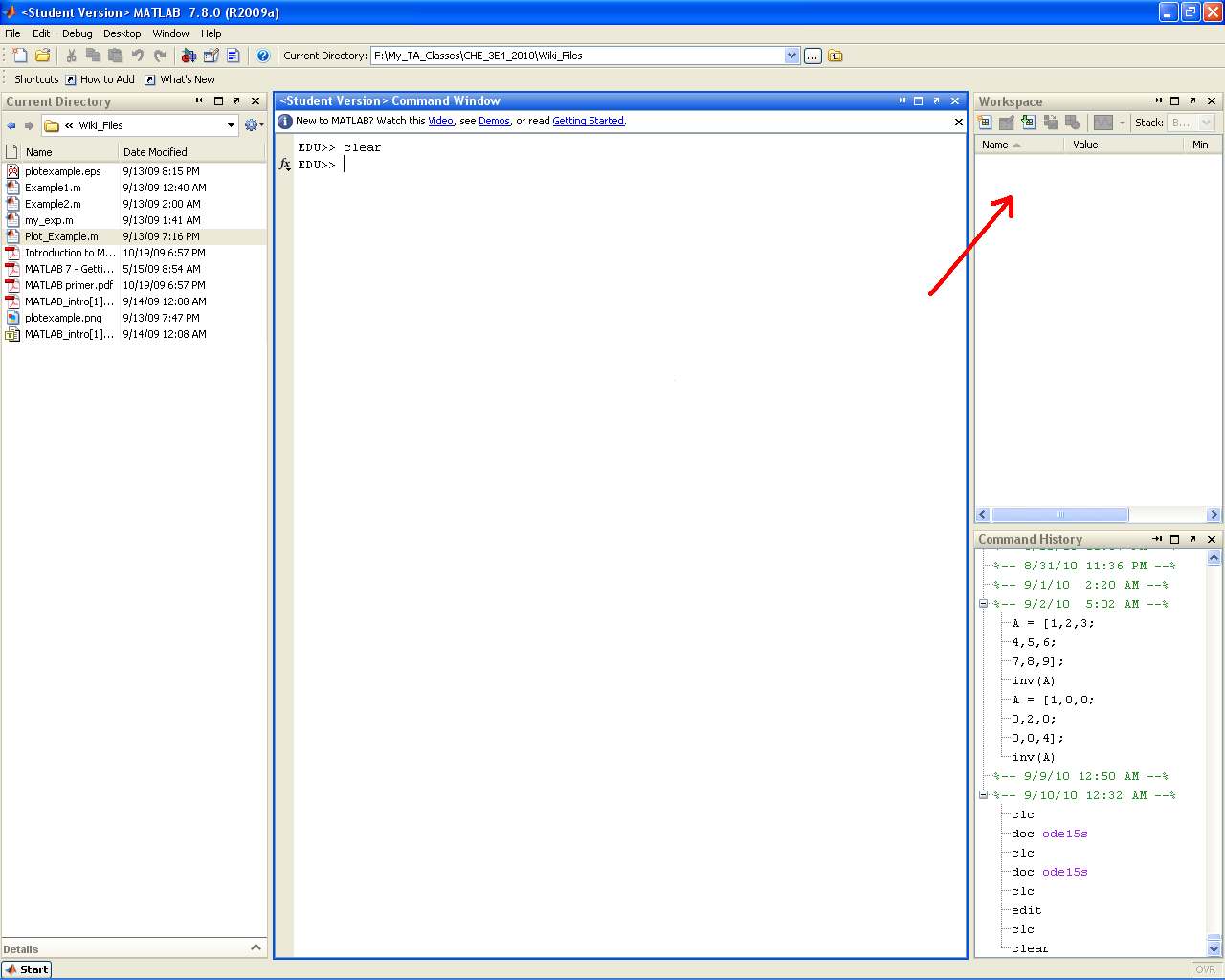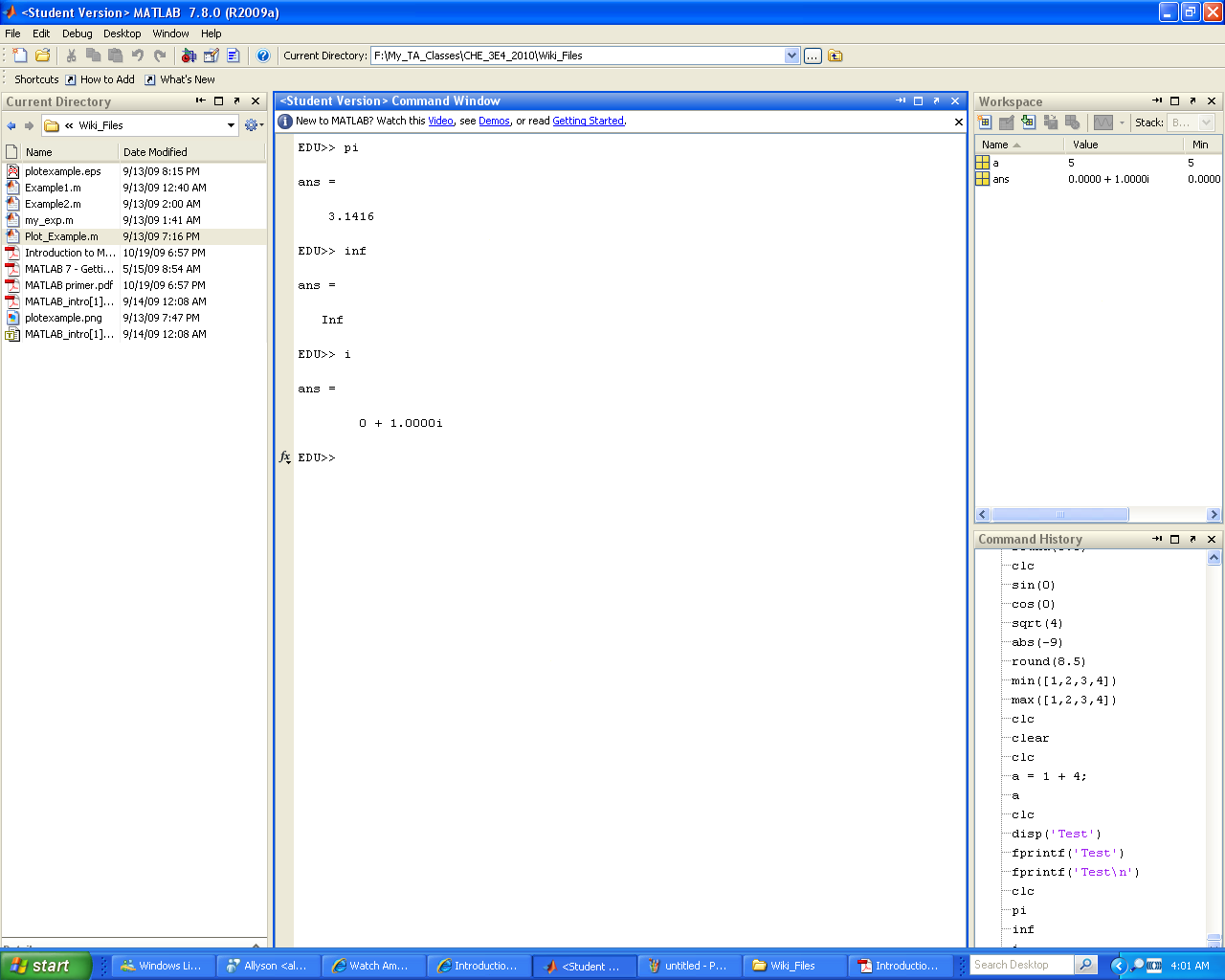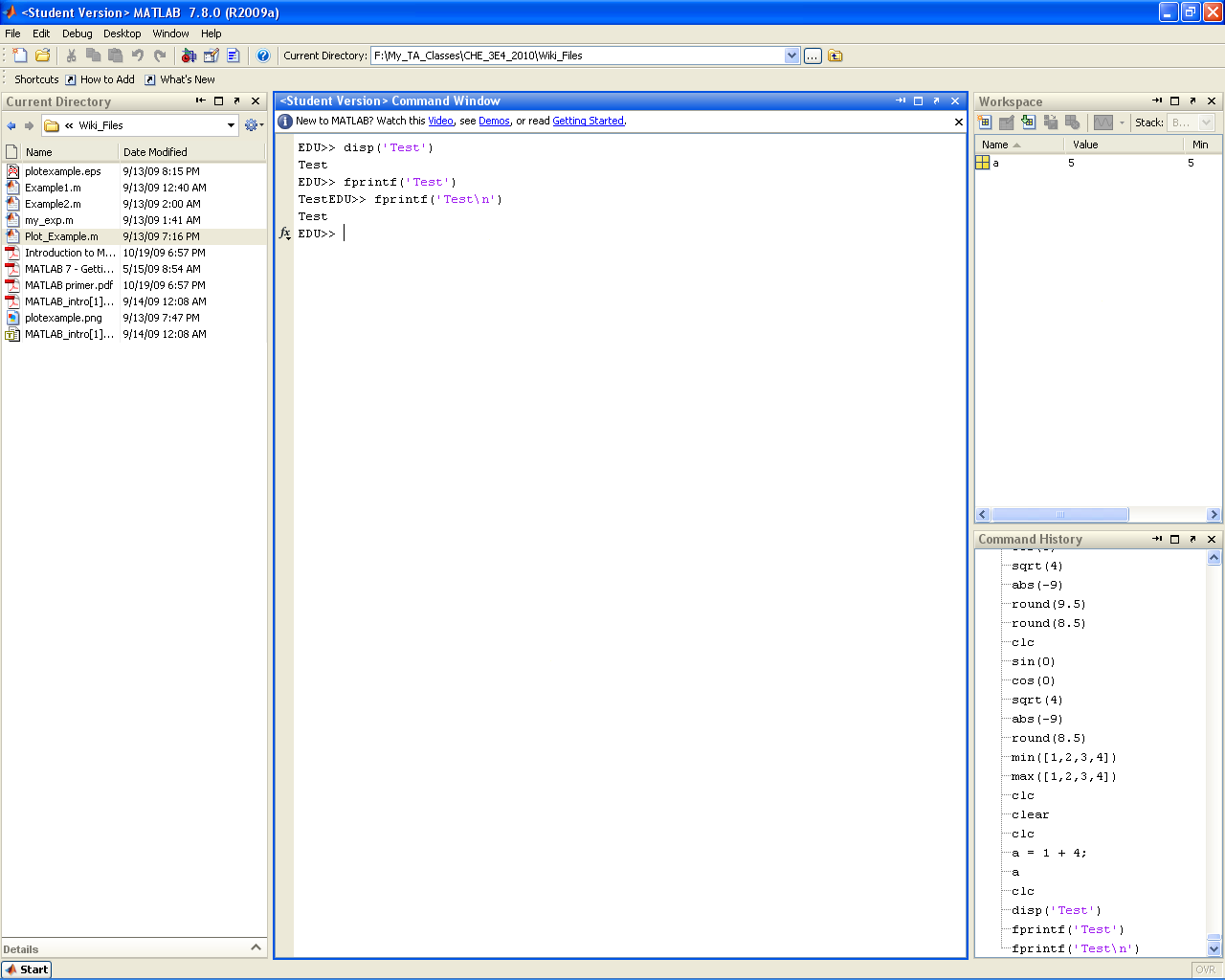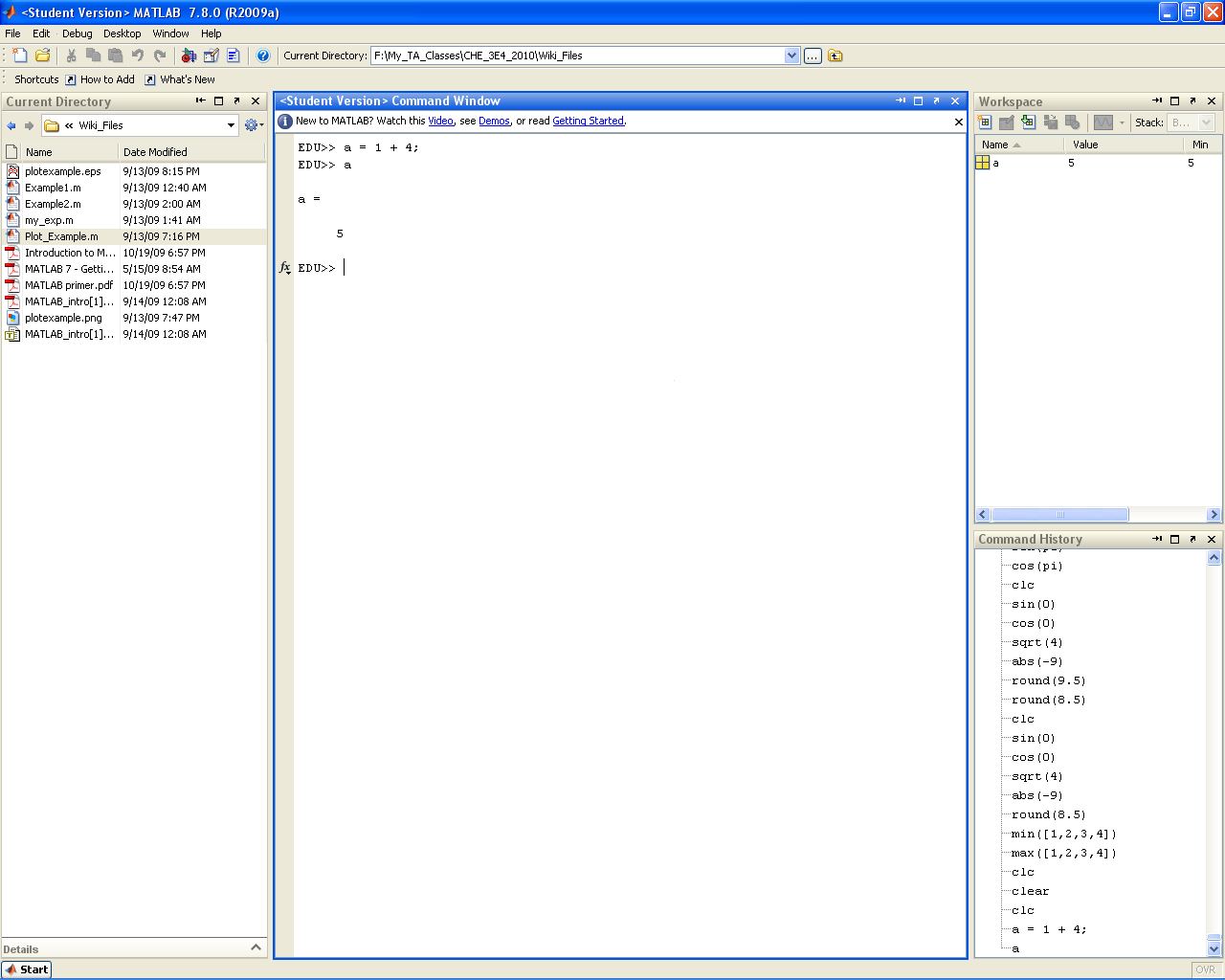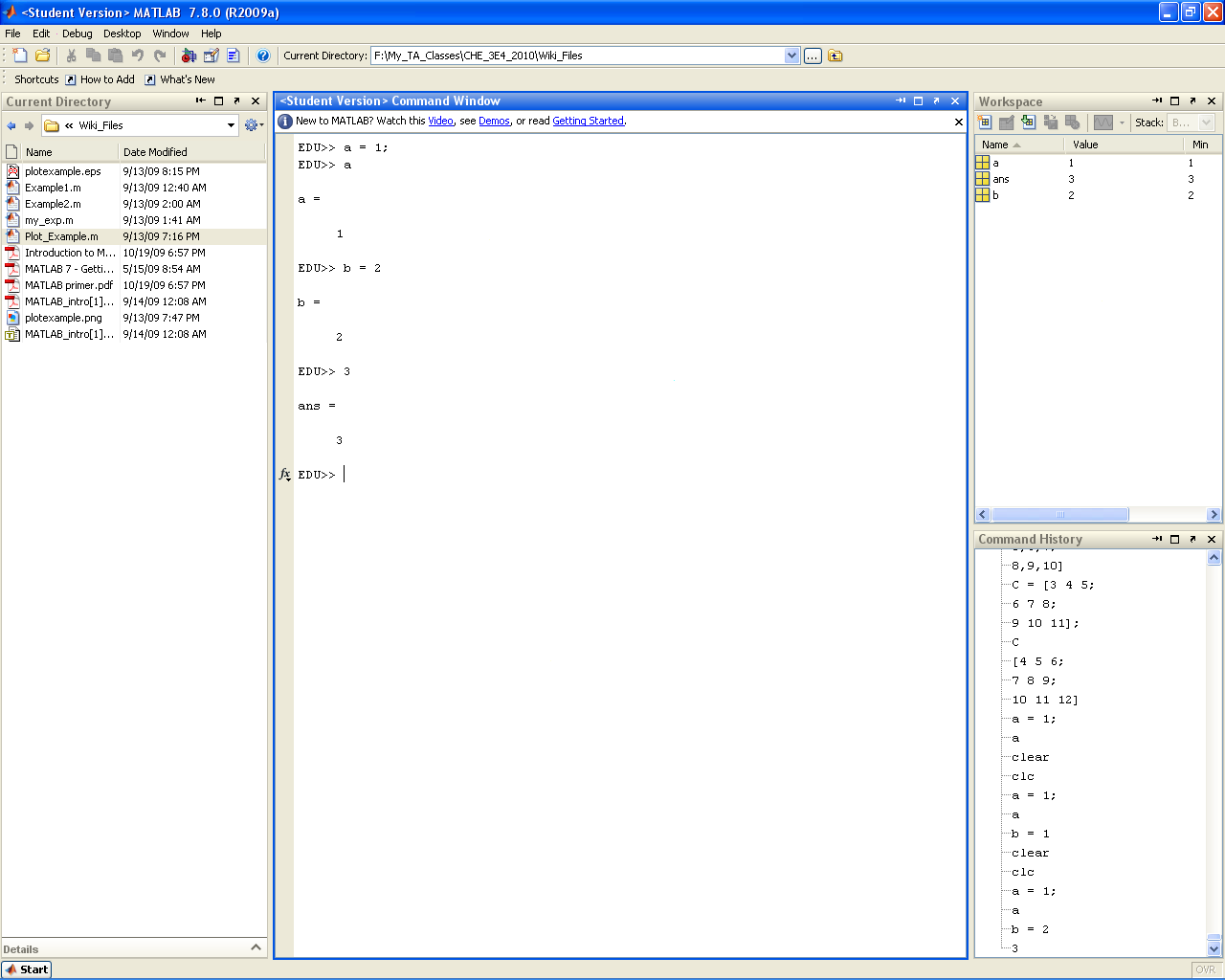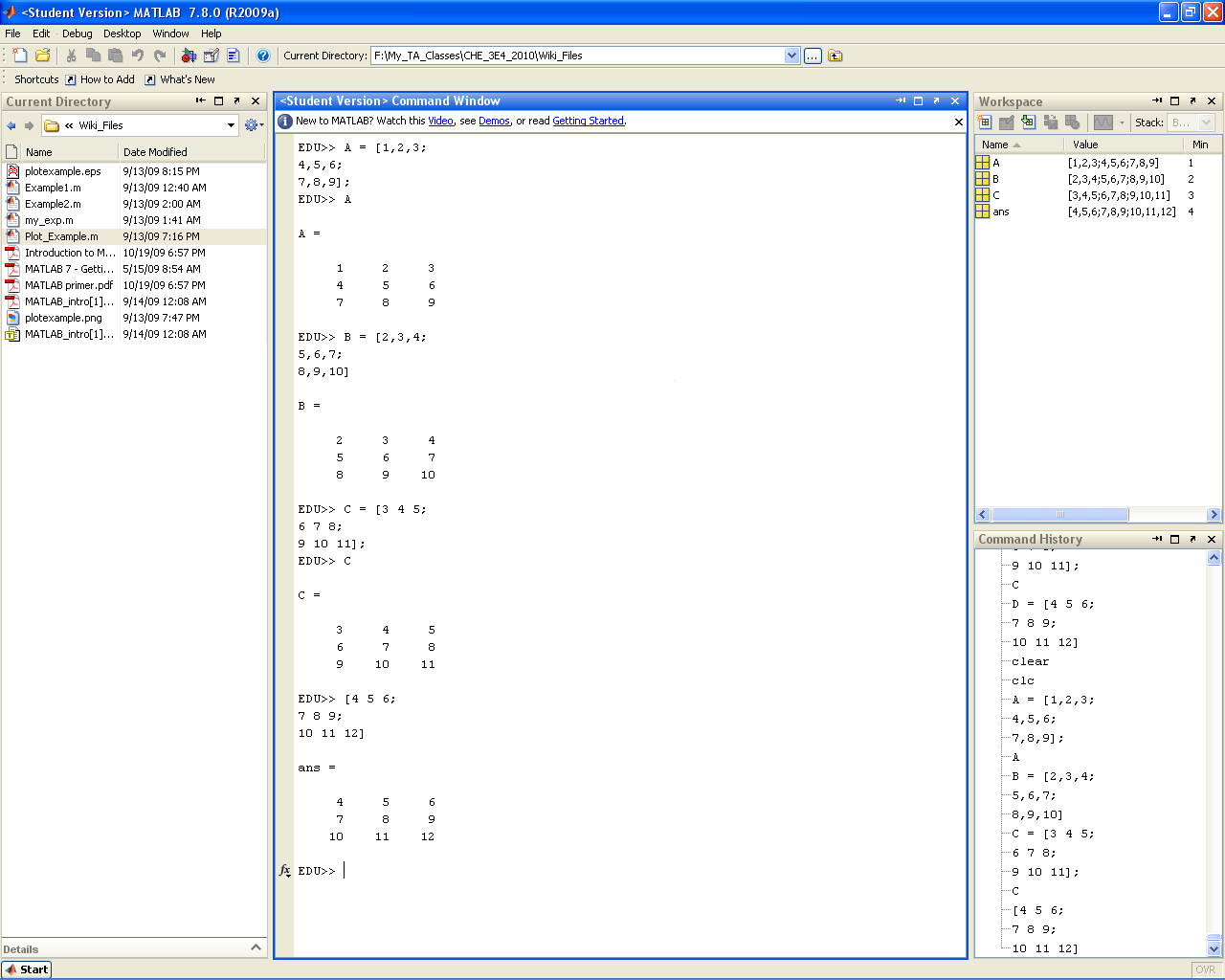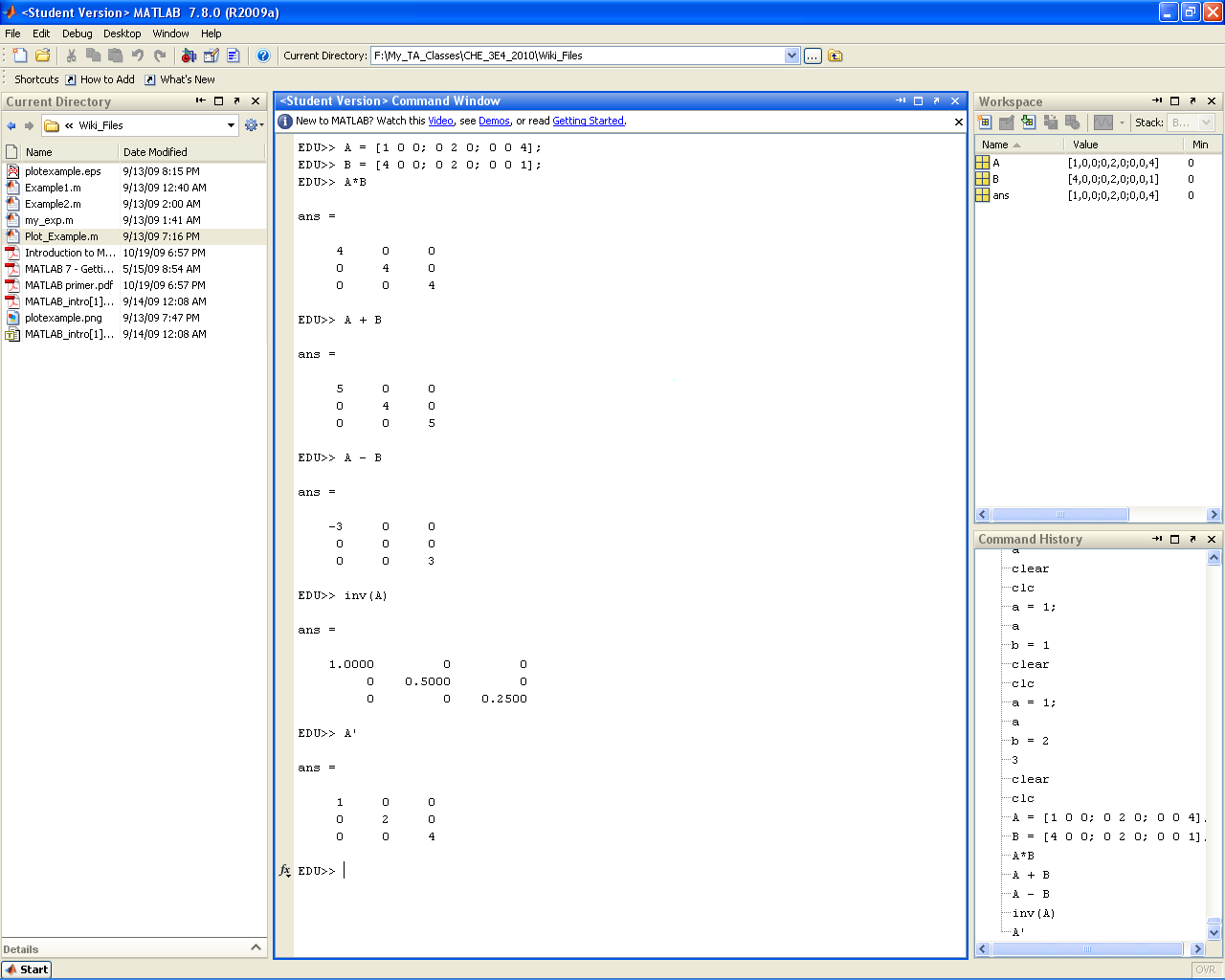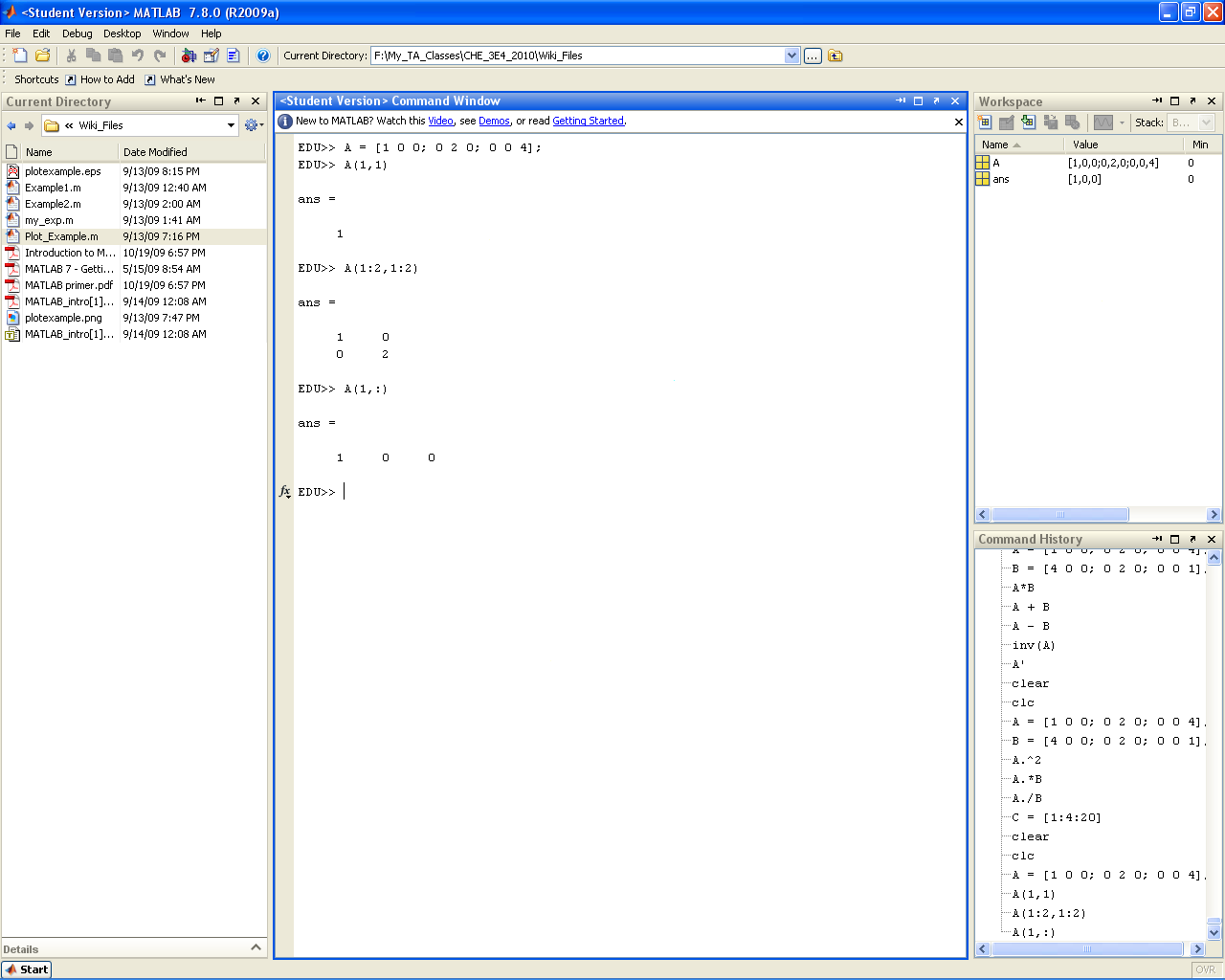Difference between revisions of "Getting started with MATLAB or Python"
| Line 50: | Line 50: | ||
|} | |} | ||
=Getting | = Getting started= | ||
{| class="wikitable" | |||
|- | |||
! MATLAB | |||
! Python | |||
|- | |||
| width="50%" valign="top" | | | width="50%" valign="top" | | ||
*When you launch MATLAB the following window will open: | *When you launch MATLAB the following window will open: | ||
| Line 92: | Line 91: | ||
[[File:MATLAB_Windows_Labeled.PNG|center|400px]] | [[File:MATLAB_Windows_Labeled.PNG|center|400px]] | ||
| width="50%" valign="top" | | |||
|} | |} | ||
=Introduction to the Command Line= | =Introduction to the Command Line= | ||
Revision as of 22:20, 10 September 2010
Introduction
| MATLAB | Python |
|---|---|
|
MATLAB (MATrix LABoratory) is a high level computer language/ interactive software package developed and distributed by MathWorks™. Matlab was first developed in the 1970s by Cleve Molar. Cleve was later joined by John N. Little and Steve Bangert and the three went on to found MathWorks™. MATLAB excels at performing matrix operations and can handle large data sets (stored as matrices) very easily. MATLAB was originally designed as a user friendly interface for LINPACK and EISPACK and so was intended for linear algebra application. Since then MATLAB has greatly expanded it's core abilities to encompass a large array of graphic and numeric applications. These core abilities may in turn be expanded further through the addition of specialized "tool boxes". |
From Wikipedia: Python is a high-level programming language whose design philosophy emphasizes code readability. Python aims to combine "remarkable power with very clear syntax", and its standard library of built-in functions is large and comprehensive. We will use the NumPy and SciPy modules (the equivalent of a MATLAB toolbox), to provide scientific computing capabilities to Python. These modules, like MATLAB, allow you to handle large data arrays with little effort. They provide all the tools we require for this course. We will also use the matplotlib module, which provides Python with plotting capabilities similar to MATLAB. |
Access / Installation
| MATLAB | Python |
|---|---|
|
MATLAB is installed on all computers in the John Hodgins Engineering Student Technology Centre (JHE 233A / 234) as well as the Burke Science Building Labs (BSB 241 / 242 / 244 / 249). The most up to date release of MATLAB is version R2010b. While there are some backward compatibility issues when it comes to older versions of MATLAB, for the level of code that will be encountered in this class students should not encounter issues with portability of code. A MATLAB/SIMULINK student package (version R2010A, good for Windows, Mac, and Linux) is available at the University Book Store for $112.95 (for those students who would like a copy of MATLAB on their laptop or home PC). The student versions comes with the following features:
I personally have a student copy on my home PC. It's a good buy if you have the extra cash. |
Python is freely available. The latest stable version that we recommend for the course is version 2.6, because it is compatible with the external libraries that we will use. Installation instructions for Python are available on this website. |
Getting started
| MATLAB | Python |
|---|---|
Command Window(1) The command window (or "command line") provides your main means of interacting with the MATLAB software. The command line allows you to enter simple codes that are processed immediately. All program outputs also appear in the command window. While it is technically possible to write an entire program at the command line, this is not recommended. For true programs, scripts and functions will be used. Current Directory(2) The "current directory" panel lists all of the files (MATLAB or other) that are located in the directory MATLAB is currently accessing. This directory may be changed via the drop down address bar at the top of the main program window. For a program to run properly, ALL CODES required must be in the same directory (for example, if you write a main script file that calls a separate function file, both files must be in the same directory). Command History(3) The command history records all commands entered in the command window (for possible future reference). Workspace(4) The workspace lists all variables, matrices, and function handles currently being stored by MATLAB. The workspace also provides basic information on the values being stored, such as size, max, min, etc. Perhaps most useful is the ability to double click variables and matrices in the workspace to open up the Variable Editor window. The variable editor is essentially a spread sheet representation of your variables that allows for easy manipulation (especially useful for large matrices). Editor Window(5) The editor window(s) does not immediately open when you launch MATLAB. The editor window is where you write scripts and function files that can be compiled and run in the command window (to be discussed in detail later). To open a new editor window you can either go to File>New>Blank M-File, hit ctrl+N, type "edit" at the command line, or hit the "New M-File" icon at the top left of the main screen (it looks like the little piece of paper with the explosion in the top left corner). To open a pre-existing M-File you need to switch the current directory to the location of the file (as mentioned above) and simply double click on the M-File name in the "current directory" sidebar. Plot Window(6) When the MATLAB plot tools are used the resulting graphics are displayed in separate plot windows (more on this later).
|
|
Introduction to the Command Line
|
|
Scripts and Functions
|
|
Code Structures
|
|
Plotting Data
|
|
Additional Resources
|
|
